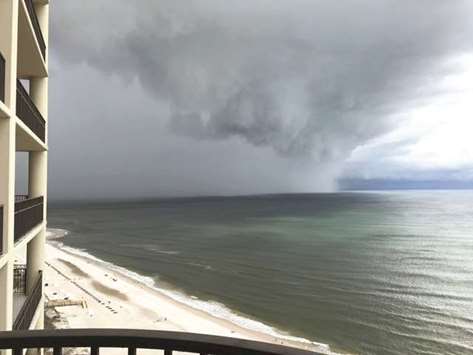At its height, Alberto, the first storm of the 2018 Atlantic hurricane season, blasted sustained winds of 105km/h with gusts that packed full hurricane punches of 121km/h, said meteorologist David Roth of the National Weather Service.
“It’s slowly weakening and it’s not regaining any strength,” Roth said. “The chances of it spinning off tornadoes now has dropped to virtually zero.”
The National Hurricane Center (NHC) canceled coastal warnings and watches for the storm, which spun up days before the formal start of the hurricane season on June 1.
Minor power outages were reported in north Florida, and the state’s emergency response team started closing shelters on Monday, citing a lack of need.
Some areas on Gulf Coast barrier islands remained under evacuation orders due to flood risks, officials said.
Alberto will probably weaken as it moves northward into the Tennessee Valley and then to the Ohio Valley, finally withering into a “remnant low pressure storm” by the evening, with winds at around 40km/h, Roth said.
The NHC warned it would still deliver heavy, potentially damaging rains of 6cm to 15cm, with as much as 30cm in some areas in north Florida and Alabama through yesterday night.
It could dump up to 15cm of rain as it moves north toward lower Michigan by today evening, officials said.
Two journalists covering the worsening weather in North Carolina were killed on Monday when a tree fell on their vehicle.
Royal Dutch Shell Plc was sending workers back to the eastern Gulf of Mexico and Chevron Corp restored some production on Monday after the storm’s passage.
Shell plans to restore production at its Ram Powell Hub in the Viosca Knoll area of the Gulf as it soon as the platform can operate safely, the company said.
Authorities in Florida’s Franklin and Taylor counties issued mandatory evacuation orders for thousands of coastal residents.
Four deadly hurricanes struck the United States last year, killing at least 144 people and causing billions of dollars in damage, massive power outages and devastating hundreds of thousands of homes and businesses, according to the NHC.



